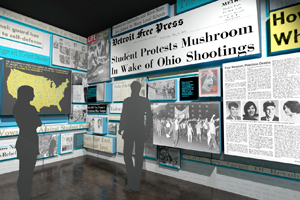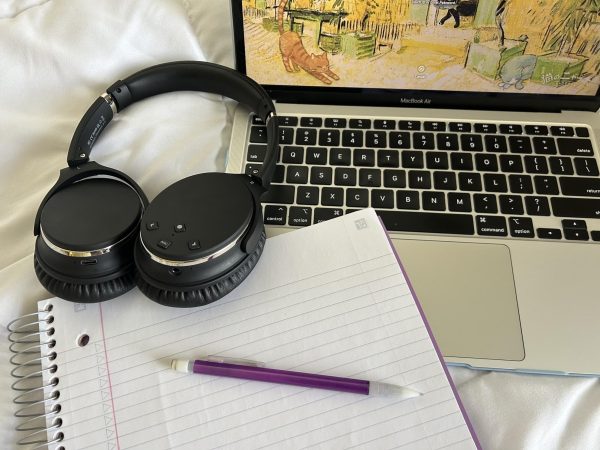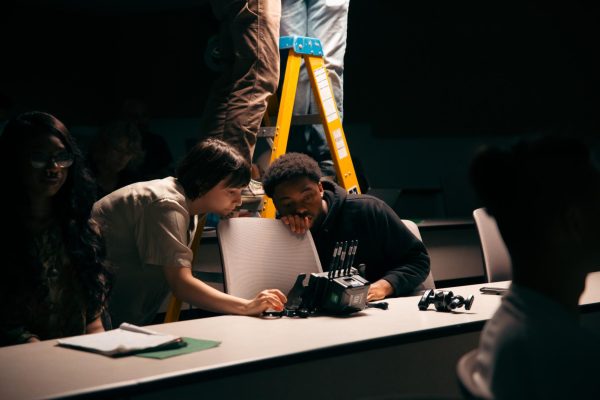Remembering May 4 easier with Visitors Center $300K grant

Photo courtesy of Laura Davis.
August 30, 2011
WHY STUDENTS SHOULD CARE
- The May 4, 1970 shootings happened on Kent’s campus.
- The shootings were a turning point in the way Americans felt about the Vietnam War.
- Four students were killed and nine were wounded, and the Visitors Center, now with funding to open, will commemorate those students and teach future generations about what happened that day.
There are big things in store for the future May 4 Visitors Center thanks to a $300,000 grant from the National Endowment for the Humanities.
Laura Davis, faculty coordinator for May 4 initiatives and co-author of the proposal to NEH, said she first submitted a proposal four years ago for a planning grant. Since then, Davis and proposal co-author Carole Barbato have continued to send proposals for grants for the exhibit itself. After much positive feedback from NEH, they awarded Kent State the money.
“I was beside myself … startled and surprised,” Davis said. “I was speechless.”
The grant is going to help with the “actual fabrication of pieces and parts that become the physical entity of the exhibit,” Davis said. It will also be used for the cost of permissions of materials such as photo images, for design fees and for video production.
Judy Havemann, director of the Office of Communication at NEH, said they are only able to fund 11 percent of people who ask for grants, and the grant they gave to Kent State was “a very good one.”
Alan Canfora, a founding member of May 4 Task Force student organization and director of the May 4 Visitors Center, was one of the students wounded in the shooting in 1970. Canfora said receiving the grant is a great achievement for Kent State.
He said people who visit the outdoor site are looking for information and want to know where it happened, and the grant is a big step forward for the Visitors Center to present accurate information.
The May 4 Visitors Center is an indoor compliment to the outdoor memorials already located on campus.
“(Students and staff) have been working on a number of projects related to institutionalizing the history of May 4,” Laura Davis, faculty coordinator for May 4th initiatives said.
One outdoor site, the walking tour, is a 17-acre walk that goes through the site of the shootings. There are seven walking tour trail markers that have photographs from May 4, 1970, and descriptions about the events.
In the parking lot between Taylor and Prentice Hall, tourists can find markers exactly where each of the four students fatally wounded died. The memorials are rectangular granite pieces surrounded by six light posts, with the student’s name engraved on a plaque.
Also located by Taylor Hall is a sculpture created by Don Drumm. The sculpture has a bullet hole from the May 4 shootings.
Davis said she thinks there is one overall message when it comes to the May 4 memorials and remembering what happened that day.
“Young people can make a difference,” she said.
The May 4 Visitors Center, which will open in 2012 in Taylor Hall, will be a museum-style indoor exhibit that will have three galleries for visitors to walk through.
The first gallery will be a representation of the 1960s, where people can learn about what that time period was like, including the civil rights movement, social and cultural change and the Vietnam War.
The second gallery will be iconic photos of the events on May 4, 1970. A film will project on the wall where people can stand in the stream of the projection like they are at Kent State during the shootings.
“People will have a very immersive experience,” Davis said.
In the third gallery, people will see headlines, magazine articles and letters from that era. They will see discussions about why that day is still important and be able to enter their own thoughts on a computer.
“It’s a great contribution to awaken the American people of the reality of the events,” Canfora said.
In order to decide which school or cause will get the grant, Havemann said the NEH brings in experts to review the proposals and decide on a basis of scholarship, national importance, topics seeming to be in need of explanation and the quality of the proposal itself.
“Public memory is shifting, and people need to make up their own mind about events of the past,” Havemann said.
Havemann said the board looked at the center’s script, or the detailed outline of all wording and images to be presented, and decided Kent State had done well in explaining the meaning of the shooting and the affect in society today.
“It’s wonderful because it’s a significant amount of money, and it comes in tough economic times, which makes us that much more appreciative,” Davis said. “It’s validation. The way the exhibit is is the way it should be.”
Contact Caitlyn Callahan at [email protected].























